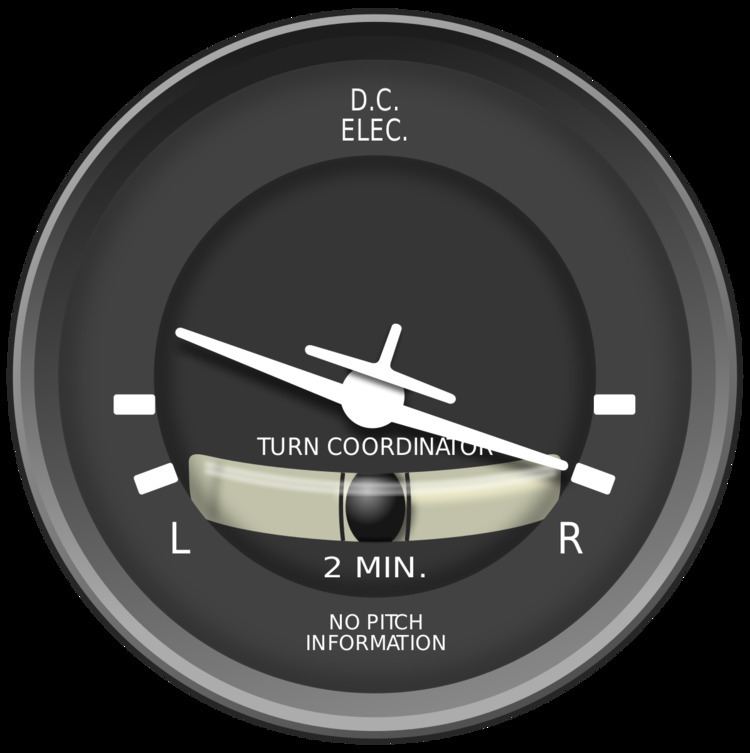 | ||
Aircraft maneuvering is referenced to a standard rate turn, also known as a rate one turn (ROT).
Contents
A standard rate turn is defined as a 3° per second turn, which completes a 360° turn in 2 minutes. This is known as a 2-minute turn, or rate one (180°/min). Fast airplanes, or aircraft on certain precision approaches, use a half standard rate ('rate half' in some countries), but the definition of standard rate does not change.
Usage
Standardized turn rates are often employed in approaches and holding patterns to provide a reference for controllers and pilots so that each will know what the other is expecting. The pilot banks the airplane such that the turn and slip indicator points to the mark appropriate for that aircraft and then uses a clock to time the turn. The pilot can roll out at any desired direction depending on the length of time in the turn.
During a constant-bank level turn, increasing airspeed decreases the rate of turn, and increases the turn radius. A rate half turn (1.5° per second) is normally used when flying faster than 250 kn. The term rate two turn (6° per second) used on some low speed aircraft.
Instrumentation
Instruments, either the turn and slip indicator or the turn coordinator, have the standard rate or half standard rate turn clearly marked. Slower aircraft are equipped with 2-minute turn indicators while faster aircraft are often equipped with 4-minute turn indicators.
Angle of bank formula
The formula for calculating the angle of bank for a specific true airspeed (TAS) in meters per second is:
where
For a rate one turn and velocity in knots (nautical miles per hour), this comes to
A convenient approximation for the bank angle in degrees is
For aircraft holding purposes, ICAO mandates that all turns should be made, "at a bank angle of 25° or at a rate of 3° per second, whichever requires the lesser bank." By the above formula, a rate one turn at a TAS greater than 180 knots would require a bank angle of more than 25 degrees. Therefore, faster aircraft just use 25 degrees for their turns.
Radius of turn formula
One might also want to calculate the radius
If the velocity and the angle of bank is given,
This is a simplified formula that ignores slip and returns zero for 90 degrees of bank. The constant 11.29 is simply the gravitational acceleration expressed in kn2·ft−1:
